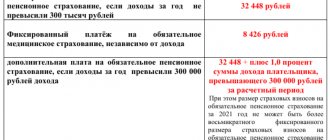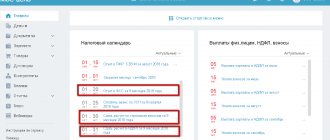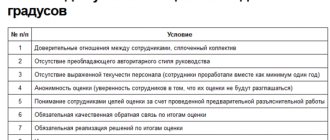The concept of materials and raw materials in accounting
These nomenclature groups include assets that can be used as semi-finished products, raw materials, components and other types of inventory assets for the production of products and services, or used for the own needs of an organization or enterprise.
Purposes of materials accounting
- Control of their safety
- Reflection in accounting of all business transactions involving the movement of inventory items (for cost planning and management and financial accounting)
- Formation of cost (materials, services, products).
- Control of standard stocks (to ensure a continuous cycle of work)
- Identification of shortages, losses, damage to materials
- Analysis of the effectiveness of the use of mineral reserves.
Posting examples
All adjustments in inventory accounting are attributed to account 84 “Retained earnings (uncovered loss)” (clause 15 of PBU 1/2008). Here are examples of postings:
- Debit 84 Credit 10
- the cost of materials excluded from inventories is written off;
- the accounting value of goods and finished products has been brought to fair value;
- The value of the reserve is adjusted to reduce the cost of material assets.
Subaccounts 10 accounts
PBUs establish a list of certain accounting accounts in the Chart of Accounts that should be used to account for materials in accordance with their classification and item groups.
Depending on the specifics of the activity (budgetary organization, manufacturing enterprise, trade, etc.) and accounting policies, accounts may be different.
The main account is account 10, to which the following sub-accounts can be opened:
| Subaccounts to the 10th account | Name of material assets | A comment |
| 10.01 | Raw materials | |
| 10.02 | Semi-finished products, components, parts and structures (purchased) | For the production of products, services and own needs |
| 10.03 | Fuel, fuel and lubricants | |
| 10.04 | Container materials, packaging | |
| 10.05 | Spare parts | |
| 10.06 | Other materials (for example: stationery) | For production purposes |
| 10.07, 10.08, 10.09, 10.10 | Materials for processing (outside), Construction materials, Household supplies, equipment, Working clothes, equipment (in warehouse) |
The chart of accounts classifies materials according to product groups and the method of inclusion in a certain cost group (construction, production of own products, maintenance of auxiliary production and others, the table shows the most used ones).
Description of the account “Raw materials and supplies”
This sub-account collects general information about the availability and movement of raw materials and materials (which necessarily include construction materials - for the number of contracting enterprises) that are part of the product that has been produced, forming its basis or are irreplaceable components in its creation, and also auxiliary materials that were involved in the production of products or were consumed for the economic needs of the enterprise, technical purposes and other reasons contributing to the growth of production.
Correspondence on account 10
The debit of 10 accounts in the postings corresponds with production and auxiliary accounts (on credit):
- 20.01 (main production)
- 23 (auxiliary)
- 25 (general production)
- 26 (general economic, management)
Besides them:
- 44 (sales expenses)
- 45 (shipped goods)
- 76 (settlements with debtors and creditors)
- 94 (shortages and losses)
- 99 (profit and loss)
- And others - according to the chart of accounts and accounting policies.
Accounting for inventory items in accounting: postings and documents
Accounting for inventory items in accounting is reflected on the basis of primary documentation and can be as follows:
- The purchase of materials is made in cash or by bank transfer, confirmed by a purchase agreement, payment and settlement documents or the transfer of a power of attorney to receive goods and materials with subsequent settlement with the supplier. It is received at the warehouse on the basis of a bill of lading or a receipt order. When purchasing materials, additional transportation and procurement costs (for example, delivery) may be reflected.
- Sale of materials - transfer of raw materials to third parties.
- Transfer - from the founders, contractors or sponsors, is accounted for at the estimated value or on the basis of available documents: contracts, payment documents, appraisal reports, etc.
- Write-off of materials - reflects the expenditure of inventory and materials into production. It may imply both the write-off of materials for actual production and the write-off for general business needs. Depends on corr. accounts (20, 23, 25, 26). Disposal may be reflected due to damage or loss of inventory items.
- Shortage of materials or surplus of materials are recorded as a result of inventory. They may be reflected within the normal limits or as a result of loss/damage.
- Operations with customer-supplied raw materials - features of accounting for materials received from another organization.
For production and for own needs, materials are released from the warehouse upon request - invoice or other documents (based on accounting policies); are written off to the production site, which then includes them in the cost of products or services.
Carrying out inventories
Every year, according to PBU, owners are required to conduct scheduled inventories on the basis of an issued order with designated responsible persons. In addition to them, there may be unscheduled (sudden) audits and inventories. Their goal: control over the safety and correct use and write-off of inventory items .
Which accounts does account 10 correspond to?
Account 10 can correspond with the following accounts:
From the debit of account 10 to the credit of accounts:
- Account 10 - when transferring materials between warehouses;
- Account 15 - when purchasing materials using accounts 15, 16 in accounting;
- Account 20 - when registering materials from the main production;
- Account 23 - when registering materials from auxiliary production;
- Account 25 - when recording materials that arose during the implementation of general production expenses;
- Account 26 - when recording materials that arose during the implementation of general business expenses;
- Cch. 28 – when registering irreparable defects as materials;
- sch. 29 - when receiving materials from service farms;
- sch. 40 - when adjusting the actual cost;
- sch. 41 - when converting goods purchased for resale into materials;
- sch. 43 - when converting finished products into materials;
- sch. 44 - when recording material that arose when incurring sales expenses;
- sch. 60 - upon receipt of materials from suppliers;
- sch. 66 - upon receipt of materials in the form of short-term trade credits or loans;
- sch. 67 - upon receipt of materials in the form of long-term trade credits or loans;
- sch. 68 - regarding fees or taxes attributable to the cost of materials;
- sch. 71 - upon receipt of materials from accountable persons;
- sch. 75 - when the founders contribute shares with materials;
- sch. 76 - upon receipt of materials from other suppliers, inclusion of the cost of services in the price of materials, etc.
- sch. 79 - upon receipt of materials from branches or head offices;
- sch. 80 - when making contributions from partnership participants in materials;
- sch. 86 - upon receipt of materials as targeted funding;
- sch. 91 - upon receipt of materials during the disassembly of OS objects;
- sch. 97 - adjustment of the cost of materials charged to deferred expenses;
- sch. 99 - when registering materials arising due to emergency circumstances.
According to the credit of the account, it corresponds with the debit of the following accounts:
- sch. 08 - when writing off materials for preparation for operation of non-current assets, capital construction, etc.;
- sch. 10 – when transferring materials between warehouses;
- sch. 20 - when releasing materials to main production;
- sch. 23 – when releasing materials to auxiliary production;
- sch. 25 – when releasing materials for general production needs;
- sch. 26 – when releasing materials for general business needs;
- sch. 28 - when releasing materials to correct defects;
- sch. 29 – when releasing materials to subsidiary farms;
- sch. 44 - when releasing materials for sales expenses;
- sch. 45 - for the amount of shipped materials, the revenue for which has not yet been recognized in accounting;
- sch. 76 - upon disposal of materials to another counterparty;
- sch. 79 - when transferring materials to branches or head offices;
- sch. 80 - when paying off a partner’s share with materials;
- sch. 91 - when writing off the cost of materials upon their disposal;
- sch. 94 - when a shortage of materials is detected;
- sch. 97 - when assigning the cost of materials to future expenses;
- sch. 99 - when writing off materials for emergency circumstances.
Postings to inventory items
Materials are accounted for in account 10, which has subaccounts depending on their type (materials, semi-finished products, fuels and lubricants, inventory, others, etc.). In its accounting policy, the organization must establish how it will reflect accounting: simply at actual cost or at accounting prices (in this case, it is necessary to use accounts 15 and).
In order to write off materials, they also choose their own method in the accounting policy. There are three of them:
- at average cost;
- at cost of inventories;
- FIFO.
Materials are released into production or for general business needs. Situations are also possible when surpluses are sold, and defects, losses or shortages are written off.
Account characteristics
To record information about the availability and movement of materials, account 10 is used in accounting.
This is an active account that has a debit balance characterizing the availability of materials on certain dates.
The receipt of materials is reflected in the debit of the account based on the primary documents received by the organization, and their disposal, including write-off to production, is reflected in the credit of the account. At the same time, the company prepares primary expenditure documents for disposal.
The final account balance is determined by adding the opening balance with the turnover on the debit of account 10, and subtracting from the resulting result on the credit of account 10.
Attention! In the balance sheet, information on account 10 is reflected in line 1210.
Example of postings on account 10
The Alpha organization bought 270 sheets of iron from Omega. The cost of materials was 255,690 rubles. (VAT 18% - 39,004 rubles). Subsequently, 125 sheets were released into production at average cost, another 3 were damaged and written off as scrap (write-off at actual cost within the limits of natural loss norms).
Cost formula:
Average cost = ((Cost of remaining materials at the beginning of the month + Cost of materials received for the month) / (Number of materials at the beginning of the month + Number of materials received)) x number of units released into production
Average cost in our example = (216686/270) x 125 = 100318
Let's reflect this cost in our example:
| Account Dt | Kt account | Wiring Description | Transaction amount | A document base |
| 60.01 | 51 | Paid for materials | 255 690 | Bank statement |
| 10.01 | 60.01 | Receipt of materials to the warehouse from the supplier | 216 686 | Request-invoice |
| 19.03 | 60.01 | VAT included | 39 004 | Packing list |
| 68.02 | 19.03 | VAT is accepted for deduction | 39 004 | Invoice |
| 20.01 | 10.01 | Posting: materials released from warehouse to production | 100 318 | Request-invoice |
| 94 | 10.01 | Writing off the cost of damaged sheets | 2408 | Write-off act |
| 20.01 | 94 | The cost of damaged sheets is written off as production costs | 2408 | Accounting information |
How to correctly write off ms on account 10 8 | Branches of law
Paragraph 119 of the Instructions provides for analytical accounting of the Ministry of Health:
- by groups, names and varieties;
- in count;
- in the context of central medical centers and storage locations.
It takes into account the presence and movement of materials used directly in the process of construction and installation work, for the manufacture of building parts, for the construction and finishing of structures and parts of buildings and structures, building structures and parts, as well as other material assets necessary for construction needs (explosives substances, etc.). Materials can be accounted for at accounting prices (planned cost of acquisition (procurement), average purchase prices, etc.). In this case, the difference between the cost of valuables at these prices and the actual cost of acquiring (procuring) valuables is reflected in 16 “Deviation in the cost of materials.”
Account 10.08 – Construction materials
Let's look at what the off-balance sheet account MTs.04 is, provided for by the chart of accounts of the 1C: Accounting program, and in what cases it is used.
Changes: Background-color // .bgDefault - default background color Changes: Background-color // .leftMenu__backround1 - left menu. top block Changes: Background-color // .leftMenu__backround2 - left menu. central block Changes: Background-color // .leftMenu__backround3 - left menu.
Sub-accounts are opened for the synthetic account 10:
- 10.1 - “raw materials and supplies” - is used to register production inventories necessary for the production of finished products;
- 10.2 - “purchased semi-finished products and components, structures and parts” - is necessary for accounting for purchased unfinished products and further bringing them to the state of finished products;
- 10.3 - “fuel” - reflects the movement of combustibles and lubricants, car tires;
- 10.4 - “containers and packaging materials” - is intended to summarize information about the movement of containers and products used for its manufacture;
- 10.5 - “spare parts” - reflects the incoming and outgoing transactions of spare parts in the organization;
- 10.6 - “other materials” - ensures accounting of illiquid material assets and waste;
- 10.7 - “materials transferred for processing to third parties” - allows you to reflect the transfer for processing;
- 10.8 - “building materials” - used by developers;
- 10.9 - “inventory and household supplies” - ensures accounting of incoming and outgoing transactions on the movement of inventory and household supplies;
- 10.10 - “special equipment and special clothing in the warehouse” - is used to account for this group of materials in the warehouse;
- 10.11 - “special equipment and special clothing in operation” - allows you to take into account MC data in operation.
Consultations on 1C and accounting issues. Full or partial use of materials without the consent of the author and a direct indexed hyperlink to the website www.24Consultation.rf is prohibited.
Accounting account 08 is a synthetic account that is needed to reflect information on the formation of the initial value of non-current assets.
Legislators allow the initial cost of property to include not only the cost of its acquisition, but also some additional expenses that are associated with the acquisition of this property. Let's figure out how the initial cost of an asset is formed.
D20-3 K70,69,10-8 – charge accrued. payment, building materials for the manufacture of door blocks, etc. were written off. 2. D43 K20-3 – doors, window frames, etc. were capitalized.
D20-3 K70,69,10-8 – charge accrued. payment, building materials for the manufacture of door blocks, etc. are written off. 2. D10-8 K 20-3 – doors, window frames, etc. are capitalized.
In the chart of accounts of the 1C: Accounting program there is a number of additional off-balance sheet accounts in addition to the 11 generally accepted ones. This is done for more thorough and convenient accounting.
Account 10 “Materials” is intended for information about the availability and movement of raw materials, supplies, fuel, spare parts, inventory and household supplies, containers and other similar assets of the organization. Let us recall the procedure for working with account 10 in accounting.
When released to the main or auxiliary production and other disposals, the assessment of MC is carried out in one of the following ways:
- at the cost of each unit;
- at average cost;
- at the cost of the first acquisition of inventories.
Account 26 in accounting is a separate accounting account designed to reflect general business expenses of an economic entity. Let’s figure out what should be included in general business expenses and which accounting account to use to reflect expenses.
Revolving balance sheet: accounting 10
A damaged, obsolete, unpopular product or one that has lost its consumer qualities must be properly written off. To discount damaged goods or write them off, follow the instructions.
Accounting for inventory and household supplies with a useful life of more than 12 months is carried out as part of fixed assets (subparagraph “b”, paragraph 4 of PBU 6/01).
At the same time, in its accounting policy for accounting purposes, the organization has the right to set a cost limit within which fixed assets with a useful life of more than 12 months will be taken into account as materials. This limit should not exceed 40,000 rubles.
Organizations participating in centralized purchases of the Ministry of Health or in trading activities may not include the costs of delivering materials to central warehouses or consignees in the actual cost of the Ministry of Health (account 105.00), but immediately attribute them to the financial result (account 401.20), indicating this in the Accounting Policy.
Reflect the issue of inventory in correspondence with account 25 “General production expenses”, account 26 “General business expenses” or account 44 “Sales expenses”. Materials are written off either at average cost or at the actual cost of an individual unit. The selected write-off procedure for each group of MH should not change during the reporting year.
The arrival of values of this group into the organization is reflected in the debit of this account, and the expenditure is reflected in the credit. The balance at the beginning and end of the month in account 10 “Materials” can only be by debit and is equal to the sum of the values listed in the material report of the responsible persons. MC.
02—off-balance sheet account used to account for special clothing issued to an employee to perform his official duties. Account MTs.03 accumulates information on special tools and equipment transferred into operation. MC account.
01 is often used if the fixed asset is reflected differently in tax and accounting.
Materials are reflected in accounting at their actual cost, which is the sum of all the organization’s costs for acquisition and delivery.
In 2021, there are fewer opportunities to bring tax accounting closer to accounting. But there is a reason to get rid of unnecessary subaccounts.
If inventory is released from a warehouse to an intermediate division of the organization (for example, to the administration department), then at the time of transfer it is not known how much each division of the organization will consume (for example, accounting, purchasing department). In this case, as each department spends it, it is necessary to draw up acts (reports) in any form.
They should indicate the name, quantity, cost of the inventory and confirm the feasibility of its use. Based on these acts (reports), write off the cost of inventory and household supplies as expenses. This procedure follows from paragraphs 97 and 98 of the Methodological Instructions, approved by order of the Ministry of Finance of Russia dated December 28, 2001.
I would like to clarify - after the materials were written off for production and the products were released, VAT remained on account 19. How to reflect its write-off and accounting in the purchase book?
Inventory with a useful life of 12 months or less is included in the materials on account 10-9 “Inventory and household supplies” (clauses 2 and 4 of PBU 5/01). Fill out the purchase of inventory and reflect it in accounting in the usual manner provided for materials.
Instruction 157n defines the composition of the initial cost as follows:
- amounts paid to the supplier (seller);
- customs duties, remuneration to intermediary organizations, payment for consulting services and other payments related to the acquisition of material assets;
- costs for delivery and assembly of materials. Moreover, the costs of their delivery are distributed in proportion to the cost of each material stock.
- other payments related to the acquisition of medical equipment.
The method for estimating the value of write-off inventory and household supplies should be established in the accounting policy for accounting purposes. Such rules are established by paragraph 73 of the Methodological Instructions, approved by order of the Ministry of Finance of Russia dated December 28, 2001.
Description of the account “Construction materials”
Costs for the production of building materials are taken into account on account 20-3 “Industrial production”.
If a construction workshop is allocated to the balance sheet, then the building materials are finished products; if not allocated to the balance sheet, then the materials arrive on account 10-8.
Account 20 in accounting is a register on which the costs of a manufacturing enterprise are recorded. We'll tell you what relates to the main production, what operations are reflected in account 20 and how the entries are made correctly.
At the same time, in the current year (before drawing up the annual reporting cost estimate), products are taken into account at the planned cost. After drawing up the annual reporting cost estimate, the planned cost is adjusted to the actual cost. Convene a commission.
The inventory for the write-off of goods is carried out by the inventory commission. It is convened by the head of the company, for which an order is issued. The commission’s task is to determine the availability of goods in the presence of materially responsible persons, for example, a warehouse manager.
Source: https://lux174.ru/nasledstvennoe-pravo/7544-kak-pravilno-spisyvat-ms-po-schetu-10-8.html
Features of accounting for low-value and wearable items
Let's create a new document. In the document header, select the Warehouse from which we will write off materials. The “Add” button in the document creates records in its tabular part. For ease of selection, you can use the “Selection” button, which allows you to see the remaining materials in quantitative terms.
Below is the form screen when you click the "Select" button. For ease of use, to see only those positions for which there are actual balances, make sure that the “Only balances” button is pressed. We select all the necessary positions, and with a mouse click they go to the “Selected Positions” section. Then click the “Move to Document” button.
This change in legislation naturally led to the need to change the operating algorithm of accounting programs. In this article, we will use a specific example to look at what changes the developers have made to the 1C: Accounting 8 edition 3.0 program.
According to paragraph 15, paragraph 5, Article 169 of the Tax Code of the Russian Federation, as amended. Law No. 150-FZ from 07/01/2016. In the invoice issued we indicate the code of the types of goods in accordance with the Commodity Nomenclature of Foreign Economic Activity. Unfortunately, for customization and modification it is locked with a password. It would be nice to indicate this in the header...
How to work with account 10 chart of accounts
Account 20 in accounting is a register on which the costs of a manufacturing enterprise are recorded.
Great! please write the password for AktSpis2. You need to adjust the length of the act name line. Thank you!
The invoice is signed by the financially responsible persons of the deliverer and recipient and submitted to the accounting department to record the movement of materials.
But the USSR responded to this threat four years after the war with its own bomb, and then other rules of the game came into play, because true gentlemen invent their own rules for their own convenience.
Examples of counting 10-8 - Construction materials
The product group is associated with the types of products manufactured. The amount of revenue is reflected by product groups. In this case, for example, if different workshops produce the same products, one product group should be indicated.
Question: Which tangible assets (materials) are written off on the basis of a statement, and which on the basis of an act? In our organization, detergents and toys are issued from the warehouse according to invoice requirements. Then we draw up an act for their write-off.
The issuance of stationery for use is documented in a statement.
Are we doing the right thing? According to these clarifications, the statement is used to formalize the issuance of material assets for use for economic, scientific and educational purposes, as well as the transfer for operation of fixed assets worth up to 3,000 rubles. inclusive per unit.
The organization can choose for itself which details are not needed and which ones will definitely be needed in a particular process.
Write-off of materials in 1C 8.3 step-by-step instructions
Actually, this story began long before this description began, in 1946, in the small town of Fulton, Missouri, when a once powerful politician, who was on vacation as a private citizen, announced the beginning of a new world war. Having lost the previous one, the tireless fighter “for peace”, for the whole world, placed responsibility for the new world order on the United States.
This includes the supplier’s price, intermediary fees, consulting services, customs duties, etc.
Question: In an organization, all materials are issued on the basis of the Statement of Issuance of Material Assets for the Needs of the Institution (f. 0504210) (hereinafter referred to as the statement), and then the financially responsible person transfers these statements to the accounting department. The write-off of materials is carried out on the basis of a statement or is it necessary to additionally draw up an Act on the write-off of inventories (f. 0504230) (hereinafter referred to as the act)?
Then, at the end of the month, they wrote off to account 20 the amount of expenses proportional to the share of materials released for production in the total cost of the inventories written off and remaining in the warehouse.
Such questions are not uncommon. Instructions NN 157n, 174n do not indicate the range of materials that can be issued according to a statement and upon request-invoice. Let's try to understand these and other issues related to the registration of operations for the movement and write-off of materials.
Materials are accounted for on account 10 “Materials” at the actual cost of their acquisition (procurement) or accounting prices.
The generation of invoice requirements and their use for write-off requires the fulfillment of an important condition: all materials written off from the warehouse must be used for production in the same month, that is, writing off their full value as expenses is correct. In fact, this is not always the case.
Postings received after:
- The first entry: Dt 90.02.1 Kt 41.01 shows the total cost of production;
- The second entry: Dt 62.02 Kt 62.01 shows the amount of the buyer's advance payment credited;
- The third entry: Dt 62.01 Kt 90.01.1 shows the total sales amount:
The author of the site is not responsible for your actions and decisions made based on information received from this site.
UPS for heating boilers: selection, startup, operation
Receipt of additional expenses 10.08 60.21 Receipt of construction materials from the supplier. Reflection of debt to the supplier under the contract in currency Receipts (acts, invoices) 10.08 60.21 Receipt of building materials from processing at the planned cost. The complex can be supplied in various configurations, depending on the tasks being solved. Deliveries are possible from 2020.
Business transactions must always be accompanied by the documentation used in primary accounting. The rule makes no exceptions to the write-off procedure.
But this doesn't always happen. Especially if the enterprise is quite large. It happens that the transferred values are not used immediately. Then the new storage location replaces the old one. When releasing the bases, it is worth noting that they do not always know exactly in which production process the sources are used.
Valuables that have already been released from the warehouse, but have not yet been consumed, cannot be classified as expenses for the current period.
Subaccount 10-2 “Purchased semi-finished products and components, structures and parts” takes into account the availability and movement of purchased semi-finished products, finished components (including building structures and parts from contractors) purchased to complete manufactured products (construction), which require costs for their processing or assembly.
When moving inventory items between warehouses, prepare a write-off act for the source, and a capitalization act for the receiver.
This principle instructs the accountant to proceed not from legal categories, in particular such as property, possession and the like, but from the actual state of affairs. The balance sheet should reflect only the property that is in the enterprise’s warehouses, regardless of who owns it.









